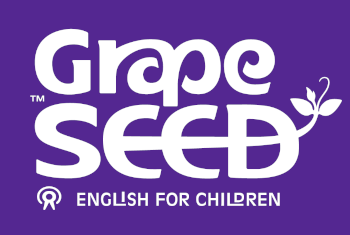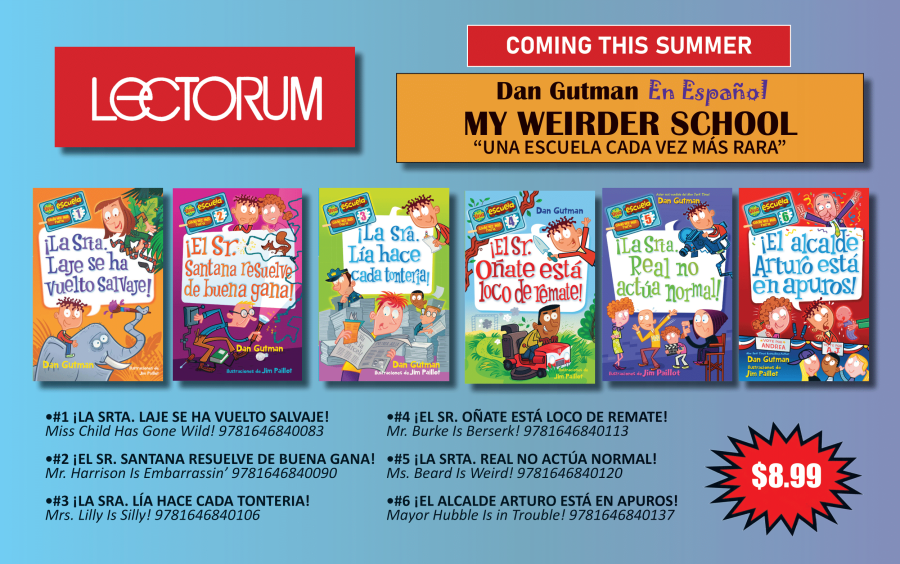Text Annotation in the 2020 WIDA Standards Framework – a Q & A
By Margaret Churchill
WANTED: Have you seen this chart?
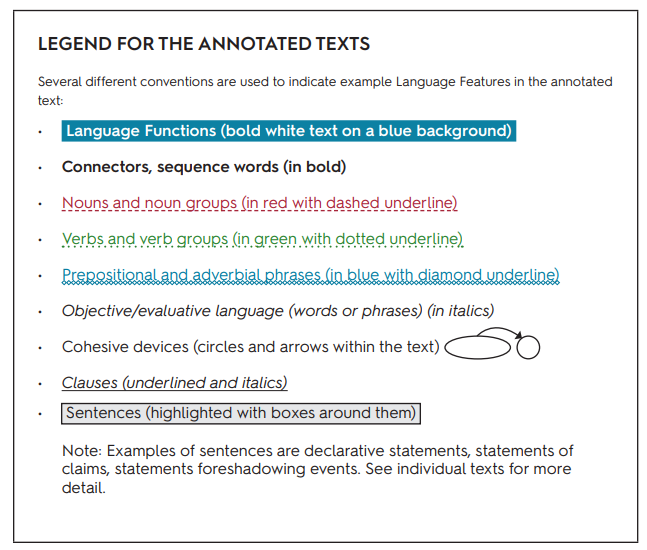 As you thumb- or scroll- your way through the nearly 400 pages of the 2020 WIDA Standards Framework, you’ll notice this figure repeated every twenty pages or so, beginning in kindergarten and continuing through high school. Its repetition is intentional, and a necessity for engaging students in building comprehension and metalinguistic awareness around texts.
As you thumb- or scroll- your way through the nearly 400 pages of the 2020 WIDA Standards Framework, you’ll notice this figure repeated every twenty pages or so, beginning in kindergarten and continuing through high school. Its repetition is intentional, and a necessity for engaging students in building comprehension and metalinguistic awareness around texts.
What is text annotation?
Text annotation in the WIDA Standards Framework focuses on how words, and phrases language function to make meaning and build understanding of a text as it is read. This is a bit more prescriptive than a comprehension-based annotation used during close reading in typical language arts classes- and it should be. MLs need opportunities to understand words, phrases, and sentences within text prior to answering comprehension questions about what was read. Engaging students with words, how they function, and taking apart language builds metalinguistic awareness of how words work together to inform the reader, and allows students to make meaning independently in order to gain an understanding of the text. Annotating text together is an essential process that boosts engagement of MLs around reading text before answering the anticipated comprehension questions that are sure to follow.
Why is it in the WIDA Standards Framework?
The WIDA annotation legend is a tool used to highlight how language functions to make meaning within a text. The purpose is to focus attention on function, rather than isolating individual grammar elements, in order to build awareness of language choices authors make when narrating, informing, explaining, or arguing. The ultimate goal, described in the 2023 WIDA Implementation Guide is “…to make more visible the language for content learning. In this way, educators can envision how to highlight language and plan for its systematic development during content learning” (p. 5). Students begin to notice language patterns, as well as see how to form language used in an explanation, or in informational text. The annotation process outlined in the WIDA Standards Framework allows them linguistic space and much needed time- to do so.
How should the annotation legend be used?
The annotation legend will need to be made accessible to grade-level clusters prior to implementation. In other words, it will require some modification on your part- based on the language expectations outlined in the WIDA Standards Framework. The legend should not be presented as is the first few times, rather, incrementally and determined by the grade-level specific conventions.
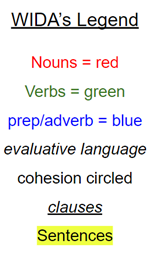 Ideally, the legend should be used within grade level school teams, and the same colors used consistently. In practice, a kindergarten team of teachers might decide to work on nouns and verbs. All teachers could display the [modified] annotation legend within their classroom so that it is visible and used in every classroom. In a high school class, the first few uses of the annotation legend might focus on nouns, verbs, and connectors. Over time, and with additional practice, other conventions could be added, like prepositional phrases, cohesive devices, and clauses. Here is a simplified version that could be added to digital documents as a legend for students to use.
Ideally, the legend should be used within grade level school teams, and the same colors used consistently. In practice, a kindergarten team of teachers might decide to work on nouns and verbs. All teachers could display the [modified] annotation legend within their classroom so that it is visible and used in every classroom. In a high school class, the first few uses of the annotation legend might focus on nouns, verbs, and connectors. Over time, and with additional practice, other conventions could be added, like prepositional phrases, cohesive devices, and clauses. Here is a simplified version that could be added to digital documents as a legend for students to use.
The idea is to start, be consistent in its use and colors, and work directly with students to model annotation and metalinguistic discussion. Ask questions like: Which colors do you use for which things? What do the bolded words do? Why do you think the author used them? Where do you see prepositional phrases in a sentence? Are they always in the same place? Why did the author include them? How do they help us understand the topic?
The newly released WIDA Implementation Guide outlines potential uses of text annotation in classroom practice. In interpretative mode, teachers and students together should read-annotate-reflect-discuss by jointly deconstructing texts. Teachers guide students through the process, according to the dimensions of language here:
Jointly analyze through the three dimensions of language.
- Discourse: Investigate the text’s purpose, audience, organizational patterns, and what makes it cohesive and logical.
- Sentence: condense and expand sentences and discuss the effects.
- Word/phrase: What types of words (e.g. figurative, evaluative) is the author using? Why?
- Strategically select shorter sections of texts to analyze–what makes these sections work? How do they relate to the whole?
WIDA 2023 Implementation Guide, p. 24
In expressive mode, teachers and students examine mentor texts to develop writing skills for narration, writing reports, explaining phenomena, or crafting an argument. In my practice with students, we create anchor charts called “What the Writer Does” to establish the structure of the anticipated response, and the language features used within the sample to facilitate written expression and meet the intended purpose. The chart is displayed during co-construction so that students can anticipate what comes next in written text.
How can I apply it in my classroom?
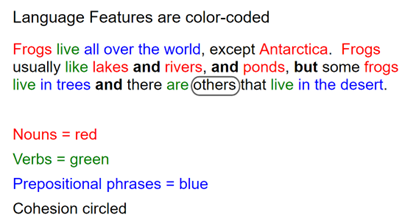
Color coding is key to using the annotation legend. I have done this both digitally and on paper with crayons. Crayons were preferred when deconstructing text. Digital color coding was used to annotate our own writing samples to identify required language features and linguistic structures prior to submission.
Start small, but start- both when interpreting texts and producing written or spoken text. For spoken text, I transcribed students’ responses and then used color-coded annotation to identify where the speaker met the language expectations of the genre. It can get messy- that’s okay! The process is entirely new to us as well as MLs.
Maggie Churchill is a longtime presenter at the national WIDA Conference, the NJTESOL/NJBE Spring Conference, and NJTESOL/NJBE Chapter meetings. She is a former WIDA Featured Educator and chaired the NJTESOL/NJBE PLC on Looking and Learning about the 2020 WIDA Standards Framework.

